#160
On return visits
I am yet to learn the right seasons for foraging here in Scotland, but last weekend Sasha came back with some freshly picked mushrooms.
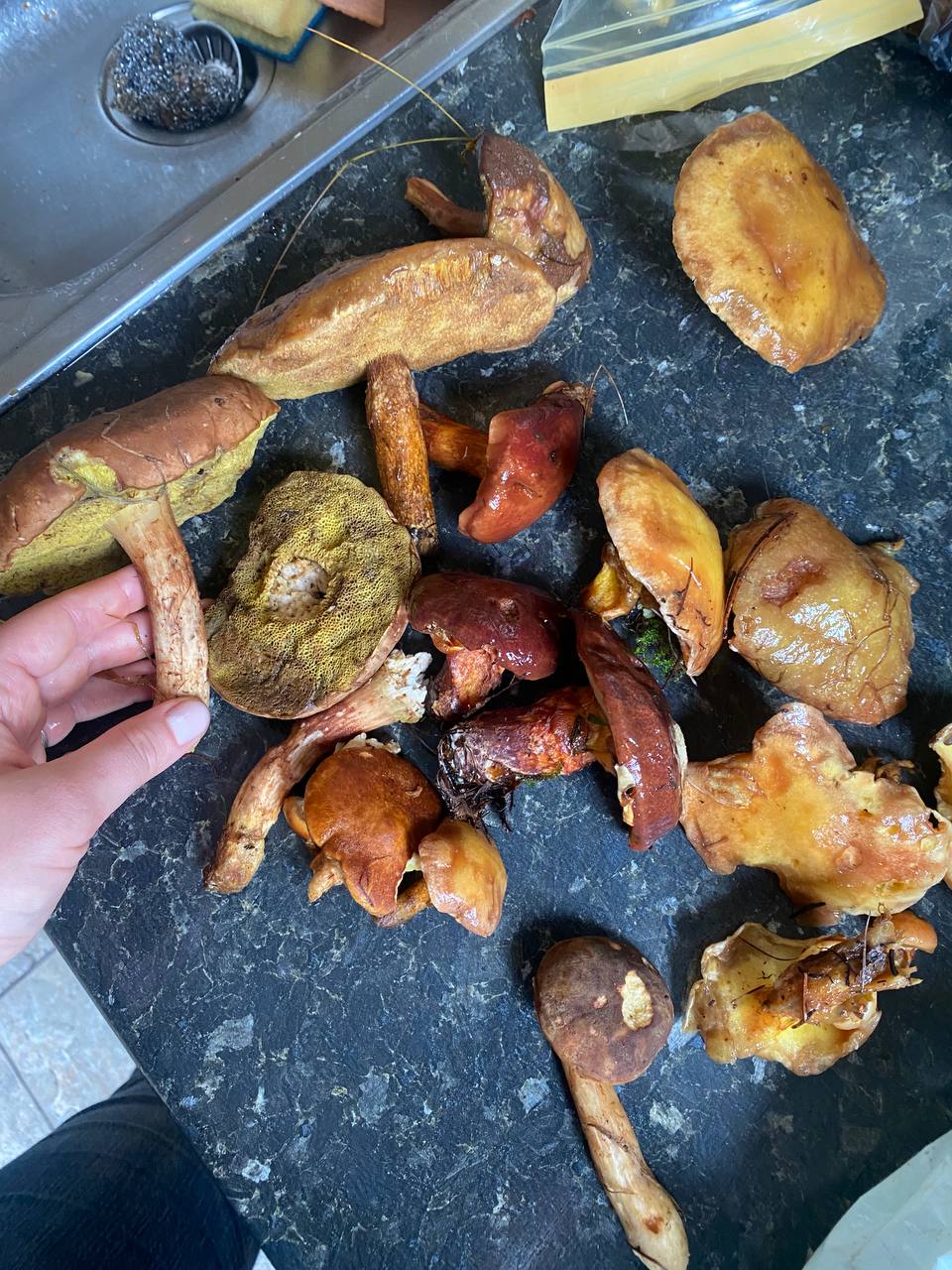
They taste great and I am still alive, so in my mind this season is already a success.
We also had friends visiting from the South, so despite the festival being already in full swing, decided to show them a selection of our favourite places in the city and paid second visits to a bunch of places (but actually the food everywhere was completely different). Here are a few highlights, like this take on Martini with a pea shoot cordial:

Or this lobster crumpet with a totally unexpected texture:
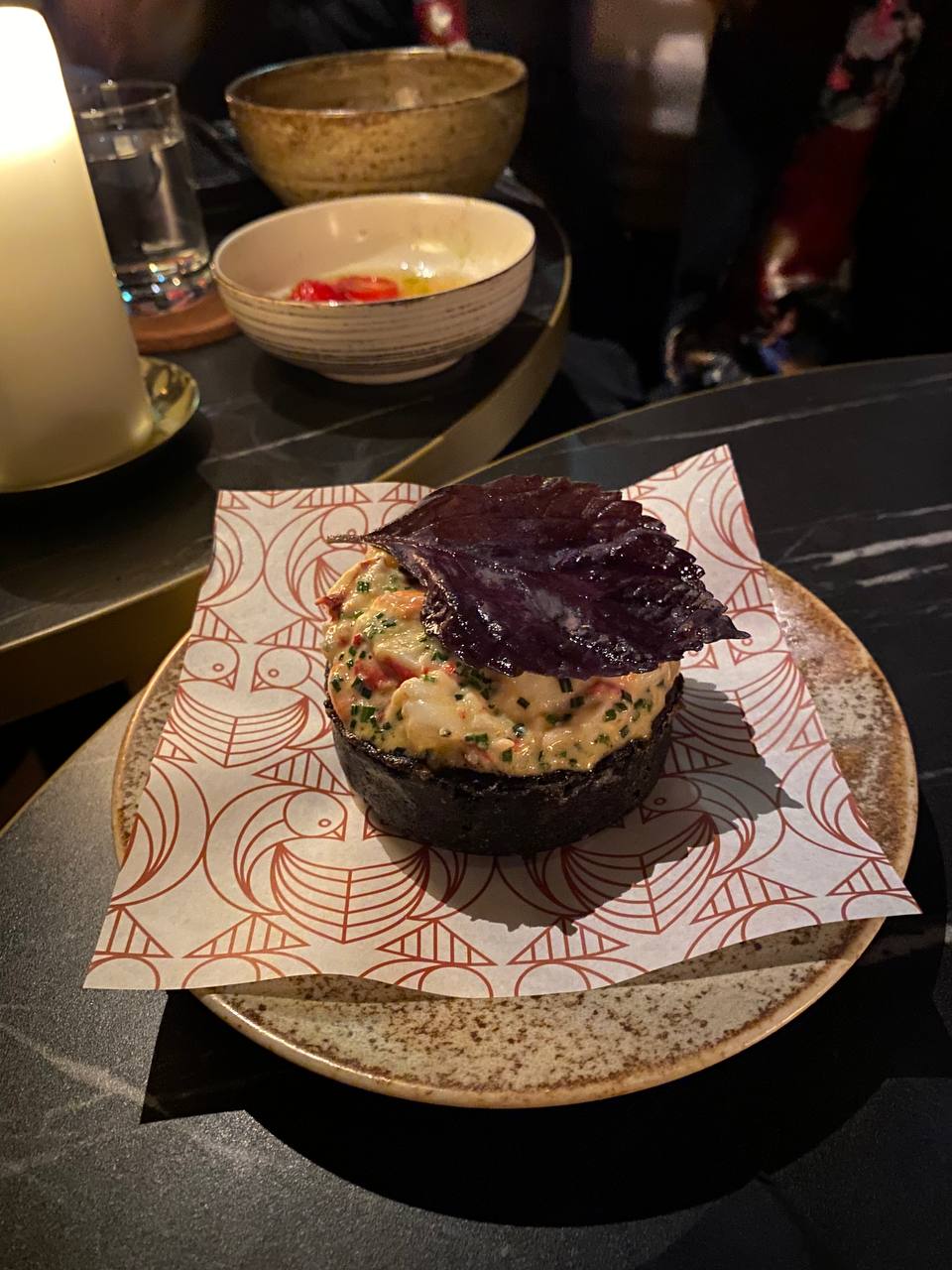
We've also came back to Noto after more than a year's break, and the only same dish on the menu was this crab-and-butter starter. Flavour-wise it doesn't excite me at all, but it looks really cool:

The tuna temaki with yuzu koshu was exceptional though: I ended up ordering a few kilograms of sashimi grade tuna just to replicate it at home.
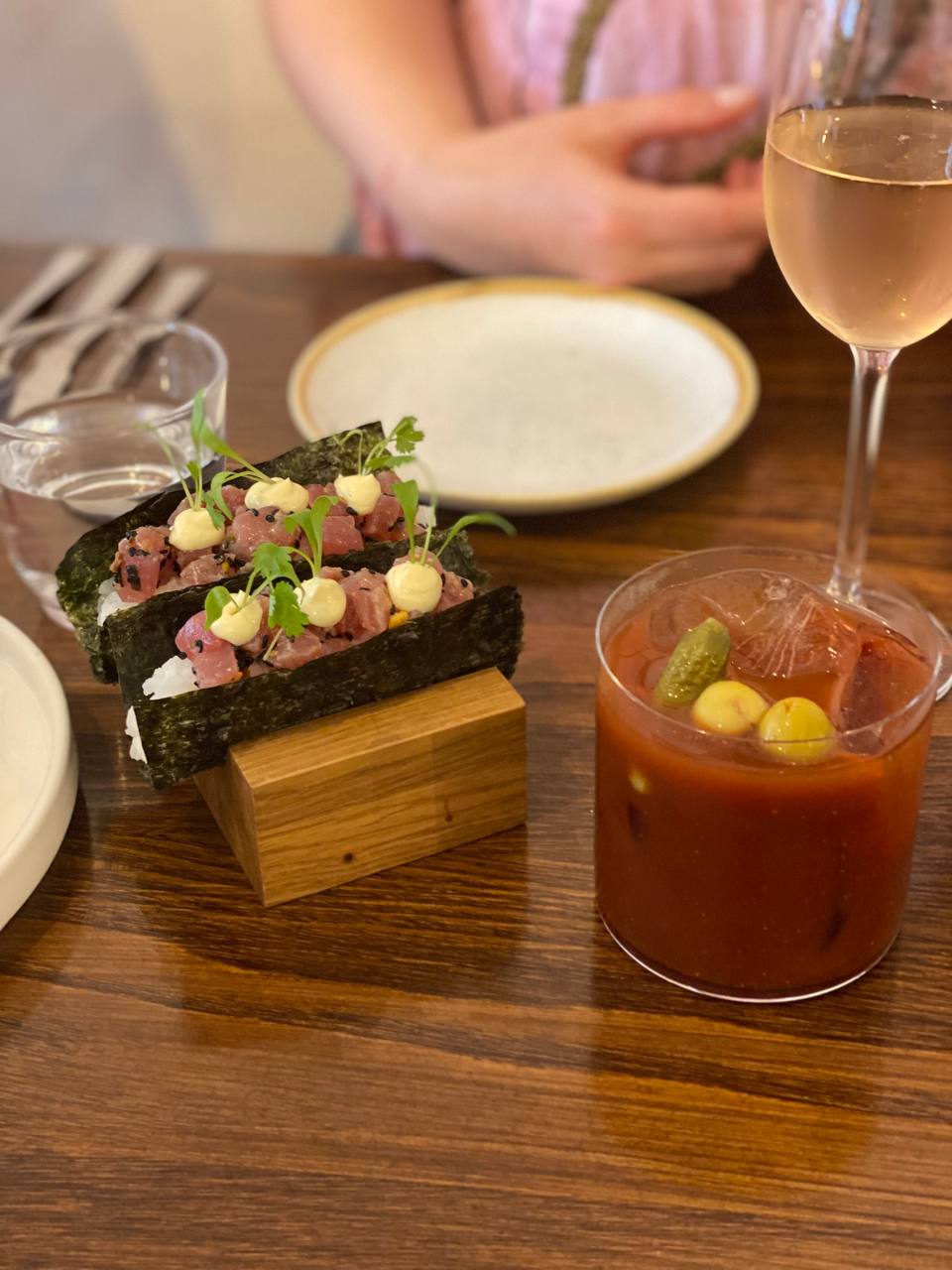
I am also a huge fan of these Arbroath Smokie croquettes, but it's almost impossible to make bad croquettes as far as they have bold flavours and lots of fat:
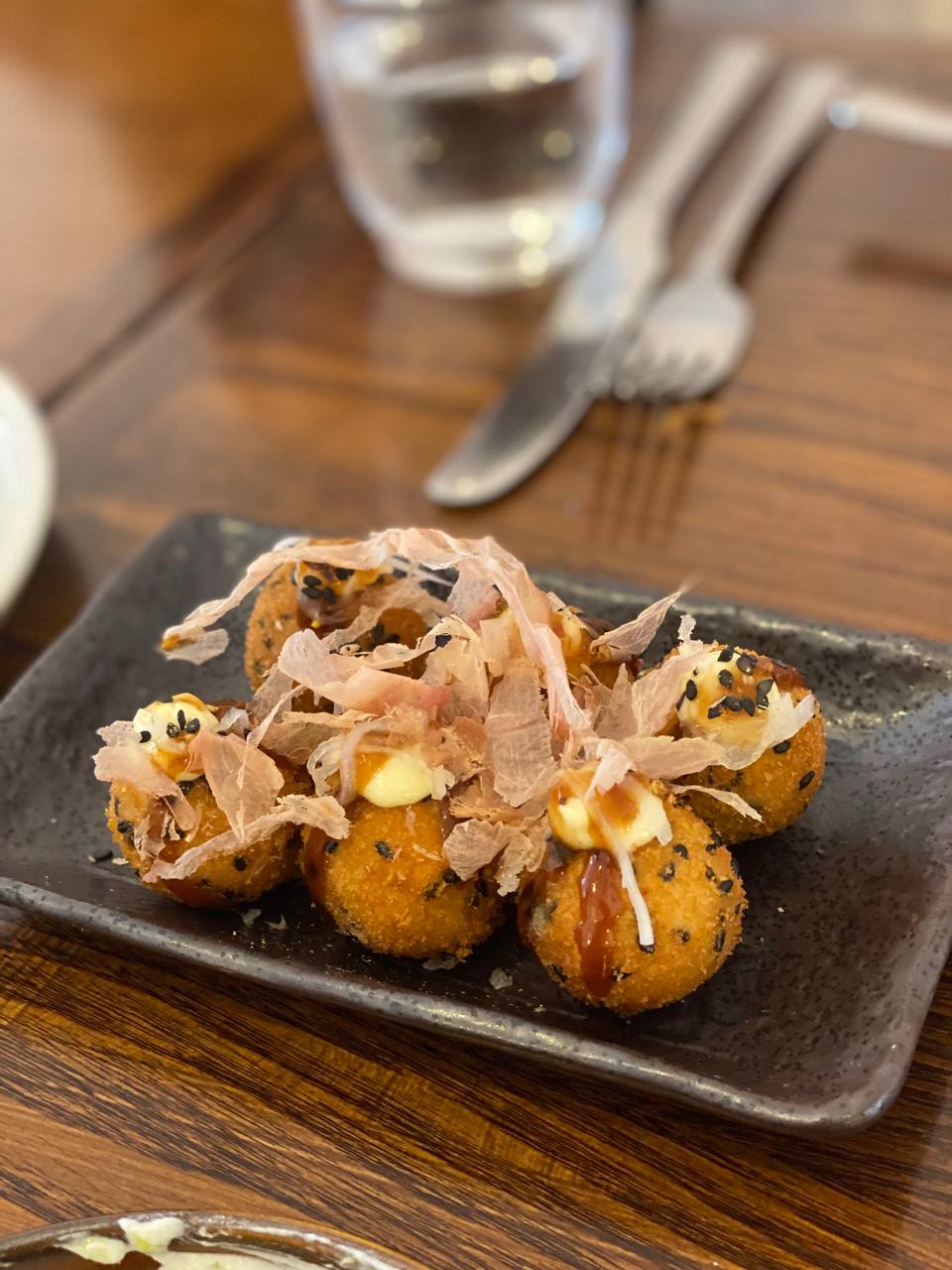
Overall we went through a few dozens of plates in two days and I definitely like it way more than the traditional triptych of a starter, some main, and a dessert.
Enjoying this? Get Tuesday Triage in your inbox every week.
Things I enjoyed reading
1. Do Unforgettable Work by Taylor
This is obviously an ironic piece, but some advice are worth listening too, even if with a grain of salt:
To be unforgettable, embrace eccentricity. Magnify your strengths and weaknesses and passions. Become a caricature of yourself. Charisma can’t be copied, but it can be created. Become someone worth talking about.
Just doing something well is not enough to stand out: you also need a way to make an impression, so people think of you when they need the right person for the job.
2. This is the Hometown of San Francisco's Drug Dealers by @meganrcassidy and Gabrielle Lurie
An investigation into how a small village in 3500 miles from San Francisco shapes the drug scene in the city:
One dealer said his slog through the desert on his second attempted border crossing was motivated by the promise of $1,000 at the end of his route in Arizona. That money was supposed to fund the final leg of his journey to San Francisco. He was given no address for his destination but told to get to the Tenderloin. Other Hondurans would be there.
But somewhere between Tucson and Phoenix, the smugglers he was meeting took his bags and left him penniless in the desert.
I don't really miss most of San Francisco, maybe with a few exceptions of the most touristic places, but stories like this one make me want to come back even less.
3. How to Be Blind by Andrew Leland
I have a pretty bad eyesight, but not as bad as the author, who was told that one day he'll be blind so he went to a school teaching people how to live without vision:
I’d heard that some people find wearing the shades intolerable, and make it to Colorado only to quit after a few days. I found it a pain in the ass, but also fascinating—like solving Bashin’s “magnificent puzzles.” On the same day that I arrived, I’d met a student nicknamed Lewie who had a high voice, and I spent the day thinking he was a woman. But people kept calling him man and buddy, and, with some effort, I reworked my mental image. Lewie had cooked a meal of arroz con pollo. I felt nervous about eating with the shades on, but I found it less difficult than I expected. Only once did I raise an accidentally empty plastic fork to my lips. At one point, I bit into what I thought was a roll, meant to be dipped in sauce, and was sweetly surprised to find that it was an orange-flavored cookie.
It's really interesting to see how the person's perception changes throughout the story, and how some things become easier (or harder) the more you are used to the complete darkness around.
4. The Cheesecake Factory knows what you want by Alex Abad-Santos
I don't think there are any restaurants of this chain in the UK, and I don't remember visiting it in the States either, but seems like they do have quite a following:
But if you ask people what it is exactly that they love about the Cheesecake Factory, beyond the seemingly universal regard for the brown bread, the results are a little more mixed. According to an extremely unofficial poll among Cheesecake Factory enthusiasts I know, one common refrain wasn’t a specific dish but rather the vibe that the Cheesecake Factory provided, which is something like a simulacrum of fine dining, accessible for all ages, especially kids. (Also key: the variety, but more on that in a minute.)
“I thought it was the pinnacle of a nice restaurant in high school,” one person told me. “A fun treat that wasn’t toooo fancy,” said another; “not that pricey compared to most nice restaurants,” said a third.
They also have a twenty-pages food menu, and that confuses me a lot: I don't remember the last time I've seen a food menu longer than two sides of an A4 paper.
5. A beautiful, broken America: what I learned on a 2,800-mile bus ride from Detroit to LA by Joanna Pocock
A wonderful story about traveling through the States by bus: I tried building the same route on Google Maps and it was quite confident that I can cover the same distances with a few changes, but judging by the story it's not as simple as Google Maps might think:
Our bus showed up, but we were further delayed while passengers on it waited for their luggage. Apparently, its faulty hold had opened and bags had scattered along the highway – or so the story went. You never quite know on a Greyhound. The rides can take on a mythical dimension. Our driver had never done the Columbus–St Louis route before and we wound our way through unlit back roads until a marine on board snapped and ordered her to use his GPS.
At Indianapolis, the driver – shaken and angry – quit. A replacement was found, and we got into St Louis as the sun was rising. An eight-hour trip had stretched into 24.
I am also still very surprised that trains are not as common in the USA as they're pretty much anywhere in Europe.
6. When did people stop being drunk all the time? by @lefineder
A really detailed research into how people used to drink booze throughout the day until eventually that behaviour stopped (and seems like jobs are to blame).
In the first of the following graphs, we see when people finish their workday, around 17:00. In the second graph, we see when people start drinking, the answer for the 18th-century cohorts is that drinking starts during the workday and already by 17:00 around 30% of people already drank liquor. In the 1830s this is no longer the case drinking on the job has seem to have been eliminated, people only start being recorded as drinking after 16:00. Society has been transformed by commercial forces.
I wonder if it also could be related to how clean the water was until early 19th century.
7. A Nordic Revolt Against ‘Ugly’ Modern Architecture by Jennifer Gersten
I don't really care much about architecture, but absolutely can't stand brutalism, and seems like many people share the sentiment:
Uprising branches in Norway, Sweden and Finland hold annual public polls to select their respective country’s “ugliest” buildings, Nordic architecture’s equivalent of Hollywood’s Golden Raspberries. Oslo’s new Munch Museum and National Museum have each taken home the Norwegian Uprising’s “Grøss Medal” in polls involving over 10,000 voters — a referendum of sorts on the city’s recent efforts to reenvision itself as a cultural capital.
“A big part of the Architectural Uprising movement is making architecture available to people,” said Peter Olsson, a volunteer social media moderator and blogger. “You can say that a building is beautiful or ugly without needing to be an architect. It’s everybody’s living environment, and everyone should be able to have an opinion about it without being mocked.”
There is probably a line between limiting the creativity too much, and actually listening to people who'll have to see the creation on daily basis, so it'd be nice to see more buildings assessed by how they will blend into the landscape as well.
8. Modern Tourism Makes It Difficult to Truly Appreciate the Sistine Chapel by Jeannie Marshall
Over the last few years I noticed that I am not excited about visiting historical sights, museums, and other famous places anymore, and the crowds around are definitely a part of that:
You might wish you had learned more about Michelangelo while you are standing elbow-to-elbow with a room packed full of your fellow travelers trying to get a look at the ceiling, trying to find one image to hold onto. Maybe it’s the famous one of God and Adam reaching toward each other, or maybe it’s the Prophet Jonah with a fish tucked under his arm.
And just as you’re thinking—hey, didn’t Jonah get swallowed by a whale? And what is that look in his eye?—one of the guards will demand silence through a thought-shattering loudspeaker while another guard tries to herd you toward the exit.
The restaurants, on the contrary, are way better for exploring one's customs and stories. Seats could be booked in advance, the number of people is heavily constrained, and the restaurants will be different everywhere (while many museums are not).
9. I Paid Off $194k in Student Loans in Six Years. It Wasn’t Easy by benjaminlabaschin
I really enjoyed the amount of details the author included to overview types of debts, fees and repayments accumulated over years of studying, but the most interesting takeaway is not in numbers:
As it turns out, all the monomania that I had put into college, into applying to jobs, and into my research at Arity, had helped me build a very useful habit: studying programming and ML. Over the course of the following weeks I taught myself R, and then Python when I was told R would hold me back. I started to try to integrate coding into my work as best I could—anytime there was a task, I'd try to leverage my newfound skills to practice, and to get work experience for my resume.
So it's not like someone spent money on a degree that helped them to repay the money back. Instead, they graduated with a double major in economics and environmental studies, got a job pulling weeds for $12/h, then a job as an economic researcher for $50K/year, then learnt data science and machine learning in their free time, got a job in data science for >$100K/year, and finally repaid the debt.
I guess the moral would be to learn programming early, and save lots of money.
10. The Greatest Scam Ever Written by Rachel Browne
Not sure what surprises me the most here: people paying money for a psychic, or people paying money via mail, but the story is pretty cool and I am surprised no one yet made a movie based on it:
Throughout our conversations over the past year, Runner maintained that neither he nor his businesses ever crossed a legal line. Many people, his attitude projected, want to believe in something magical—be it the power of a weight-loss drug or the power of a psychic. And inherent in that belief is a measure of accepted deceit. If that wasn’t the case, Runner insisted, people would have asked for their money back. He once pointed to the fact that the Duval letters offered a lifetime guarantee. (“So, you’ve got absolutely nothing to lose by putting your faith in us,” read one letter from 2013.) “Our customers bought a product, and if they weren’t happy, they got a refund,” Runner told me. According to court documents obtained by The Walrus, Runner’s defence noted that at least 96 percent of the people who sent money to Infogest Direct Marketing did not ask for a refund. “And most of them bought again and again,” he told me.
However now that I think about it, here in the UK people just spell their card details over a phone, which is arguably as bad as sending cash over mail.
Did you know I make apps?
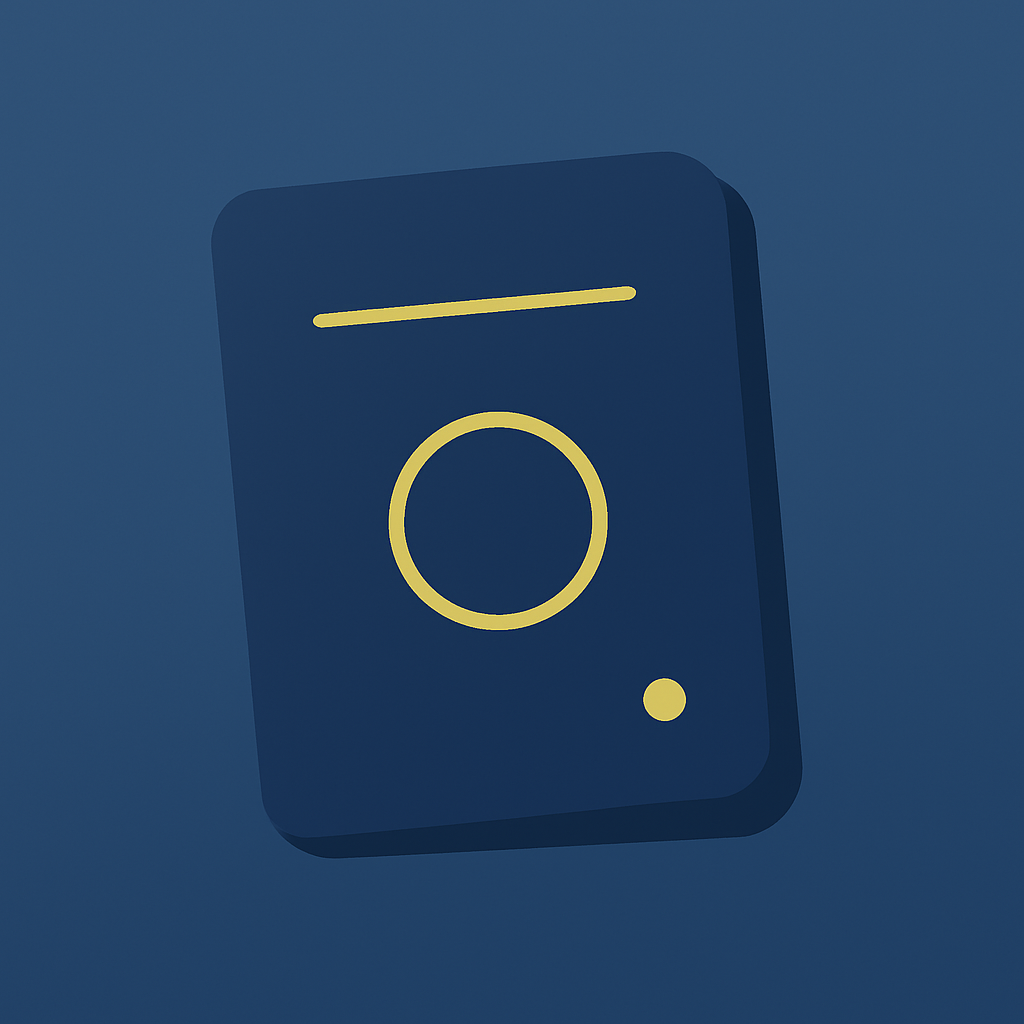
Residency
Country borders don't return JSON. This app tracks your days, warns before you trigger tax residency, and shows paths to citizenship.
Take a look →Things I didn't know last Tuesday
1. Brose
Technically "brose" means broth, so "Brose" is a broth made from oatmeal. It doesn't sounds exciting but I can see how it works in cold weather:
Brose is a Scots word for an uncooked form of porridge: oatmeal (and/or other meals) is mixed with boiling water (or stock) and allowed to stand for a short time. It is eaten with salt and butter, milk or buttermilk. A version of brose made with ground oats and cold water is called crowdie, although that term is more often used for a type of cheese.
You can obviously take it further, and make an Atholl brose, which is brose mixed with honey, whisky, and on festive occasions with cream.
2. Bordeaux grapes are too ripe
Bordeaux has lots of rules (because they're French and fancy), but recent vintages have to survive heat spikes over 30ºC and drought, which leeds to grapes ripening beyond optimal ranges for their classic red blend styles.
Despite châteaux now openly discussing the watering down of overripe grape must—which is still illegal—to preserve a semblance of balance, estates have achieved record price hikes averaging over 20% versus 2021. This paradox reveals a complacent bubble disconnecting prestige from actual wine quality (as it has historically been understood at least) and integrity as conditions shift. Bordeaux is a warning sign that reputation still heavily outweighs reality for elite regions.
Other places would pick a different grape variety or clone that is better suited for the new reality, but seems like that's not an option either.
3. Barra Airport
A colleague just flew from Hebredes islands to Glasgow and share some pictures from the airport that looks quite wild:
The airport is unique, believed to be the only one in the world where scheduled flights use a tidal beach as the runway.
Apparently the plane was a very small one too, and the only destination you can fly to is Glasgow.
4. The Sun on The Floor of La Puerta del Sol
I haven't been to Madrid yet but one day I will come prepared:
Puerta del Sol (Sun Gate) is actually a square and not a gate, but it owes its name to a long-gone gate that was decorated with a sun and was known to locals as “La Puerta del Sol.”

The sun on the floor pays homage to a massive gate that once stood there.
5. LK-99
The internet is currently divided on this one, but if the paper is true then this is one of the most important discoveries of the last century.
LK-99 (from the Lee-Kim 1999 research) is a gray-black, polycrystalline compound that potentially is a room-temperature superconductor.

So think maglev trains everywhere, losless power transmission, quantum computers and so on.
6. Swimming in Seine
I didn't know it was unlawful to swim in Seine, just thought it's kind of common sense:
Banned for a century because of the filthy water, city swimming is set to be one of the major legacies of the Games thanks to a €1.4bn (£1.2bn; $1.6bn) regeneration project universally hailed as a success.
Would be pretty cool to see the Olympics happening in the river next summer though.
7. Rock eel
The name is misleading and fish is closer to a shark, but here in the UK seems to be used akin to an eel:
This species of dogfish has a grey-brown skin with quite pronounced dark spots. Because of its relative similarity to a shark the coarse skin is usually removed by fishmongers.
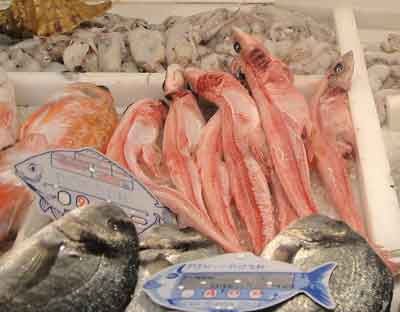
Came across it trying to but a fresh filleted eel, but that seems to be way harder.
8. Blue iceberg
Seems like most icebergs in cartoons are very rare:
A blue iceberg is visible after the ice from above the water melts, causing the smooth portion of ice from below the water to overturn. The rare blue ice is formed from the compression of pure snow, which then develops into glacial ice.

Looks pretty cool though.
9. Japan’s First Tea Tree
The oldest zen temple has a descendant of the very tree that ittroduced tea in Japan:
On the grounds of Shōfuku-ji Temple in Fukuoka, the oldest zen temple in Japan originally established by Eisai himself, stands a direct descendant of his tea trees, known as the “Japan’s First Tea Tree.” A small, nondescript tree with lean branches at first glance, it may not be anything extraordinary, but its influence on traditional Japanese culture is irreplaceable.
The tree doesn't look special though, I wouldn't even notice.
10. Hallucinogenic plants in Chinese herbals
I am not surprised that there are lots of texts written about hallucinogenic plants, but what strikes me as unusual is that many of these are not considered hallucinogens in Western world:
Some are familiar psychoactive plants in Western herbal medicine (e.g., Chinese: 莨菪; pinyin: làngdàng, i.e. Hyoscyamus niger), but several Chinese plants have not been noted as hallucinogens in modern works (e.g.,Chinese: 雲實; pinyin: yúnshí; lit. 'cloud seed', i.e. Caesalpinia decapetala).

Maybe we just don't know how to cook them.
Book of the week
I vaguely remember my last (and only) visit to Mowgli. I think it was in Liverpool in 2021, and we've picked the place by pure chance: it's a chain, but it wasn't launched in London until the end of the same year.
I do remember the food though: we had their famous chip butty, a few variaties of butter chicken, and tea-steeped chickpeas which were my only disappointment (as I didn't get much of tea flavours, but to be fair I don't get much of them even when drinking tea). The vibes were nice, and both mango lassi and cinnamon cola were good too.
Fast-forward two years, and I am binge-watching the Great British Menu, where starred chefs compete for a chance to cook at a banquet, and the owner of Mowgli is among the three permanent juries, so I could miss the chance to learn more about the philosphy behind the place's cuisine.
Nisha Katona's Mowgli Street Food is somewhat similar to the book Dishoom, as the food at both places share the same street-foody approach, but the former feels way more approachable.
There are two critical points that I insist my chefs understand before even approaching a Mowgli pan. The first is that the starting moment of any of the dishes in the Hindu kitchen is a sacred one that involves the whole attention of the chef, a good slug of hot oil and time to fry the spices until they have fully frizzled and browned. Only then can one move on to the next stage. I describe these dormant seed spices as akin to expensive scented candles. It is only when they are set alight that they release their true flavours and full potential. Nothing else must go into that pan until the seeds are all done with their awakening.
The second, critical point is that tomatoes, when added to vegetable dishes, must be given time and patience to cook from acidic red, to caramelised, warm brown. The chemistry in the pan involves those aromatic oils percolating up through the waters of the tomato, intensifying the sugars as they barge through and turning tartness to tang.
I will probably cook a few recipes from some chapters just to see how it fairs against the Dishoom, but even though I have some new questions (like adding soy sauce to lassy), it does answer the one I had for all these years: there are 4 tbsp of strong breakfast tea in two kilograms of the chickpea sauce.
Thank you and see you in a week
(or in a month)!
If you'd like to support the newsletter, please subscribe to the weekly plan. Otherwise you will keep receiving the letters on a monthly cadence – no need to do anything to opt-in.
If you have any questions, or want to suggest a link for the next newsletter, please drop me a message on Twitter or reply to this email.
Cheers! 🍸
Need help with iOS?
I spent a decade on FDA-regulated medical devices and apps with millions of users. Now I help teams ship MVPs, rescue messy architectures, and build the hard bits that don't fit in a sprint.
Learn more →